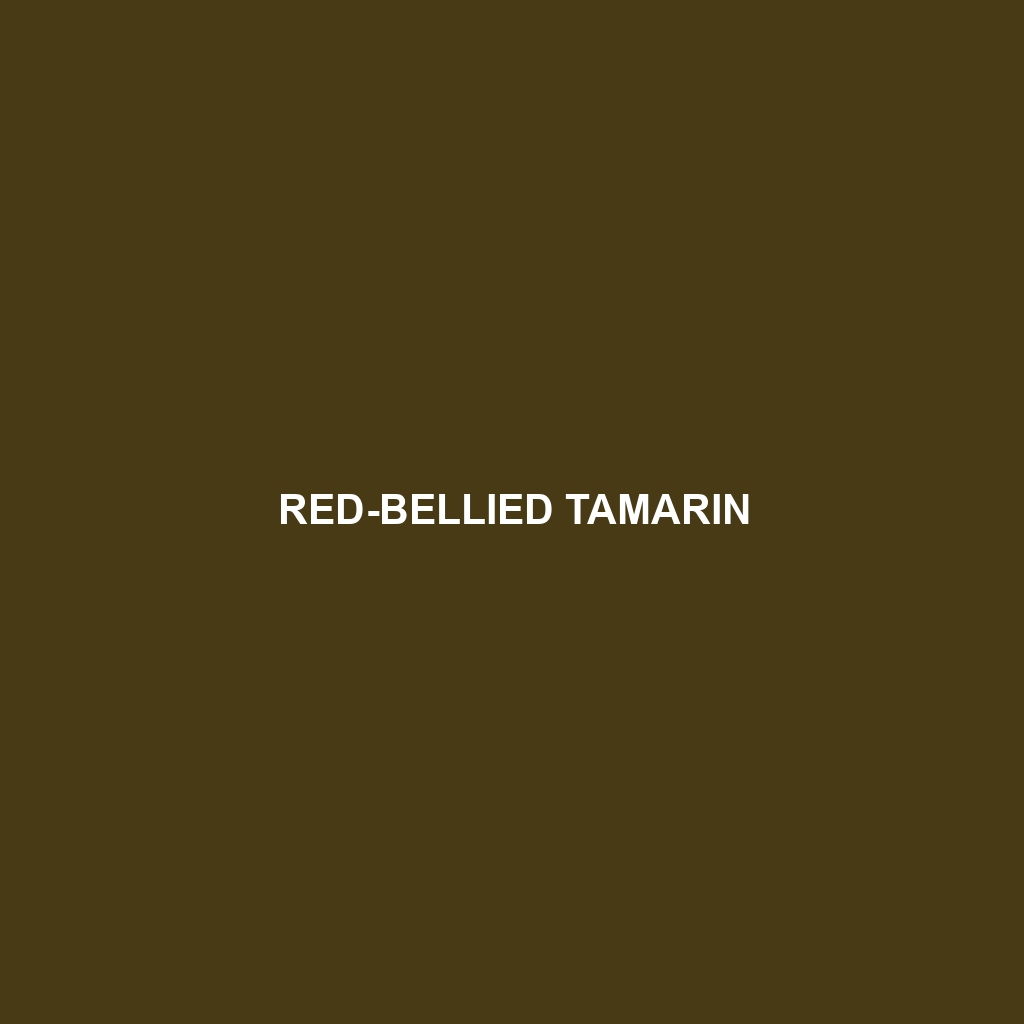Red-mantled Saddle-back Tamarin
Common Name: Red-mantled Saddle-back Tamarin
Scientific Name: Saguinus fuscicollis
Habitat
The Red-mantled Saddle-back Tamarin is primarily found in the tropical rainforests of South America, particularly in regions of Brazil, Colombia, and Peru. This species thrives in both lowland and montane forests, where dense vegetation provides ample cover and resources. They prefer areas with abundant fruiting trees and elevation gradients ranging from near sea level to mountainous terrains.
Physical Characteristics
This medium-sized tamarin typically weighs between 0.5 to 1 kg and measures around 25 to 30 cm in body length. The Red-mantled Saddle-back Tamarin is easily identifiable by its striking coat, which features a mix of creamy white and russet orange fur, most notably on its back and limbs, while the face exhibits a distinct dark coloration. Their long, prehensile tails assist in navigating through the treetops, while their attentive eyes and small, elongated snouts contribute to their charming appearance.
Behavior
Red-mantled Saddle-back Tamarins are highly social creatures and typically live in small family groups ranging from 2 to 12 individuals. Their behavior includes vocalizations that serve as communication cues, especially during foraging or when alerting the group to potential threats. Agile climbers, they utilize their strong limbs and tails to move through the forest canopy with ease. They are diurnal, being most active during the daytime, which is crucial for their foraging activities.
Diet
This species has an omnivorous diet primarily consisting of fruits, insects, and small vertebrates. They often feed on berries, nuts, and flowers found in their arboreal habitat, showing a preference for soft and ripe fruits. Their foraging behavior is vital for ecological balance, as they facilitate seed dispersal throughout their range.
Reproduction
Red-mantled Saddle-back Tamarins exhibit monogamous behaviors and typically breed throughout the year, with peaks in mating activity during the wet season. A female usually gives birth to one or two offspring after a gestation period of about 140 days. Parental care is shared among group members, which fosters a strong communal bond.
Conservation Status
Currently listed as Vulnerable by the International Union for Conservation of Nature (IUCN), the Red-mantled Saddle-back Tamarin is threatened by habitat loss due to deforestation and the illegal pet trade. Conservation efforts are critical to ensure the survival of this unique species in their natural habitat.
Interesting Facts
- The Red-mantled Saddle-back Tamarin is known for its playfulness and acrobatic skills.
- They are one of the few primate species that practice cooperative breeding, where non-parental group members assist in raising young.
- These tamarins possess an excellent sense of smell, which aids in locating food.
Role in Ecosystem
The Red-mantled Saddle-back Tamarin plays a significant role in its ecosystem by acting as a seed disperser. As they feed on various fruits, they inadvertently aid in the growth of new plants and trees, contributing to forest regeneration. The presence of this species also highlights the health of their rainforest habitat, reflecting the interconnectedness of species in maintaining ecological balance.
